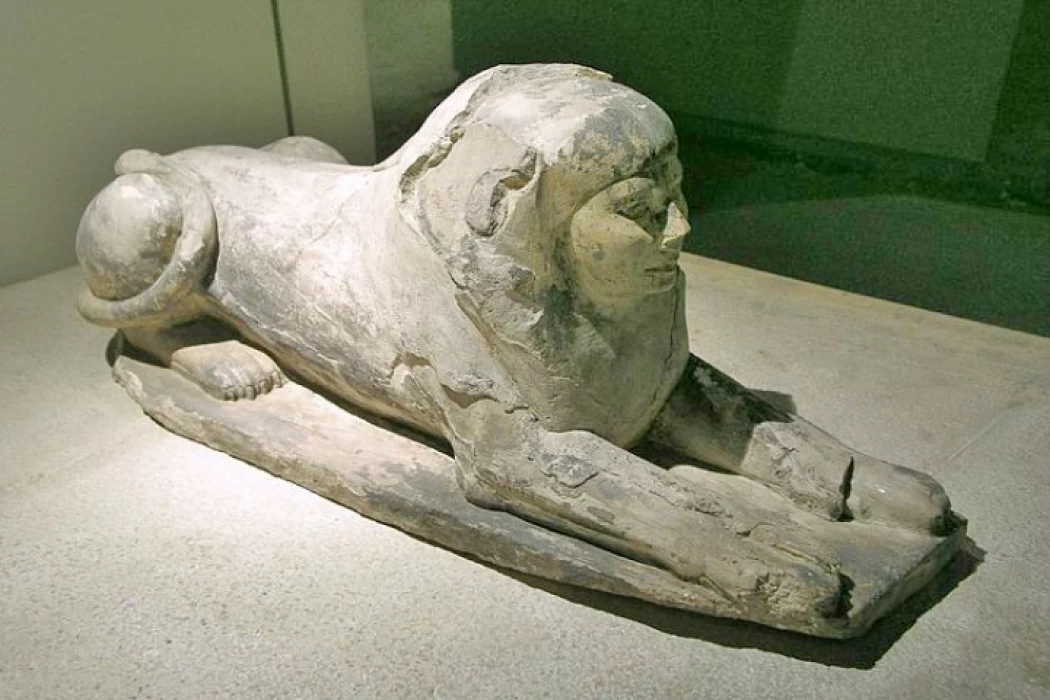
King Djedefre | Successor of Cheops
Djeddef RA or djeddef Ra and his fixed name means like Ra, as some historians called djeddef Ra and RA djeddef, is an ancient Egyptian King (Pharaoh) in the fourth dynasty within the ancient Egyptian kingdom. Djedev ra is the son and direct successor to the throne of Khufu, the builder of the Great Pyramid, and his mother is not specifically known. He is considered the first king to use Sa-Ra (meaning son of RA). he was preceded by Khufu (the second of the Kings) and Sneferu, the founder of the Fourth Dynasty. Djedev Ra wanted to build a pyramid like that of his father Khufu in the area of Abu Rawash, but he only finished leveling the base of the pyramid. He was succeeded by his son Khafre, who built for himself the second pyramid of Giza.
His family
Djedev Ra was not the first candidate to rule Egypt after Khufu, as his half-brother Ka-Wap from his first wife Meret ETS was the candidate to rule after his father, but Ka-wap was killed under mysterious circumstances in the life of his father Khufu. It is believed that he was assassinated in an orchestrated conspiracy, one of the parties to which was Djedev Ra, even if he had no role in it; there is no doubt that he was the first beneficiary of this conspiracy. As soon as Djedev Ra secured his position, he immediately hastened to marry his half-sister Hatep Haras II to further secure his throne, who at the same time was the widow of his assassinated brother Ka Waab. He had a daughter with her, Neferhotep S. Most thought that she was the mother of Pharaoh Userkaf, the first pharaoh of the Fifth Dynasty, djedef Ra married again to Khentet en-Ka, and there is a conflict in the opinions of historians between her and Hatep Haras II that she is the mother of Neferhotep Es, but she is certainly the mother of his three male children set ka, her net, and ba ka.
His reign
A cartouche named Djedef Ra is mentioned in the list of kings of Egypt (Abydos).
The head of the red granite statue of Djedev Ra is in the Louvre Museum in Paris.
Most archaeologists believe that he was the first to add to his royal titles the title of son of RA, this is evidence of the victory of the school of on (Heliopolis) and its priests at the expense of the priests of the capital MANF. The period of his reign was marked by severe disagreements and conflicts between him and his half-brothers, headed by his half-brother Djedef Hur, who also died during the reign of his brother Djedef Ra, and his tomb next to his brother Ka and was found incomplete and he got revenge.
During his reign, djedef Ra began to build his pyramid in the ABI Rawash area, where this pyramid was planned to be the same design as the pyramid of Menkaure, which was built later, but its construction was not completed, as it is believed that djedef Ra was deposed from the king after he left the most beautiful and largest statue in the world, the Sphinx, and his fate was not determined whether he died naturally, was killed or disappeared under mysterious circumstances. It is known that his half-brother Khafre did not complete the construction of the djedev-Ra pyramid after him and left it intact.
It was already a period full of internal conflicts in the Pharaoh's family, as it probably ended with the fall of Djedef RA, with the beginning of a new conflict between his brothers from Khufu's third wife Hanu-Tsen, namely Khafre and BA-Afra, who swung the throne between them until it finally fell to Khafre and after him his son Menkaure.
From the relics of Djedev Ra in the museums of the world
The Museum of Egyptian Art in Munich is acquiring 29 broken pieces of statues from the reign of djedev-Ra, and it is possible that all or some of them were from Abu Rawash.
Djedev ra in the memory of the ancient Egyptians
The ancient Egyptians celebrated the memory of Djedef Ra until the end of the sixth Egyptian dynasty, so 8 high priests presided over the celebration of his memory, which had distinct economic effects in northern Egypt, as additional crops were specially grown for this celebration to supply visitors.
The names of the Pharaohs died-Ra, Khufu, and his brother Khafre are mentioned in adjacent cartridges, in addition to the unknown names "Hor gedev" and "BAU-Ra", and the latter were probably two of the ancient rulers of Egypt. It is believed that the writing of these names in Sinai was to glorify his father Khufu and his brothers as Saints to protect the Wadi Hammamet region. An alabaster vase with the name Khufu on it was found in the city of Qafat, which is the starting point on the access road to Wadi Hammamat. This means that celebrations were held in that region in memory of these Pharaohs.
From the era of the new Egyptian state, there is a stone plaque from Saqqara in the Berlin Egyptian Museum in Berlin and it was found in one of the tombs of the Kings of the old state: it has a first name that has become unclear, but perhaps old photographs indicate the name Sneferu, followed by the names of djedef Ra, Menkaure, menkau Hor Kayu and Pepi II (Nefer ka Ra). Perhaps that part of the painting represents a view of the glorification and veneration of these Pharaohs by the owner of the Tomb.














